*Masterfeeds believes education is paramount for happy, healthy horses and is proud to present this blog in partnership with Equine Guelph’s Nutrition Month and associated Body Condition Scoring Tool and Short Course!*
When it comes to accessing the condition of horses it can be fairly common that different individuals have differing opinions on what constitutes the ideal condition. It would be unsurprising to most that a race horse trainer would likely have a very different view than a hunter judge in that respect.
Subjectivity in assessing horses’ body condition can negatively affect their health in the long run. Regularly assessing your horse both visually and through hands on palpation can help you make sure their current nutritional program is working and assists in catching condition changes before they become a larger issue. Keep reading to learn how we would feed the horse with a BCS of 1-3, 4-6, and 7-9.
Henneke Body Condition Scoring (BCS).
After more than 40 years, the Henneke Body Condition Scoring (BCS) for horses is still the gold standard of attempting to objectively assess the body condition of all breeds and ages of horses. BCS is scored on the neck, shoulder, withers, loin, tailhead, and ribs from 1-9, with 1 being emaciated and 9 being obese. These six areas are key in assessment as they help to determine fat deposits (or lack thereof), regardless of breed or individual structure and can then guide what changes in the diet and lifestyle may be necessary to get back to ideal condition. Some factors to consider:
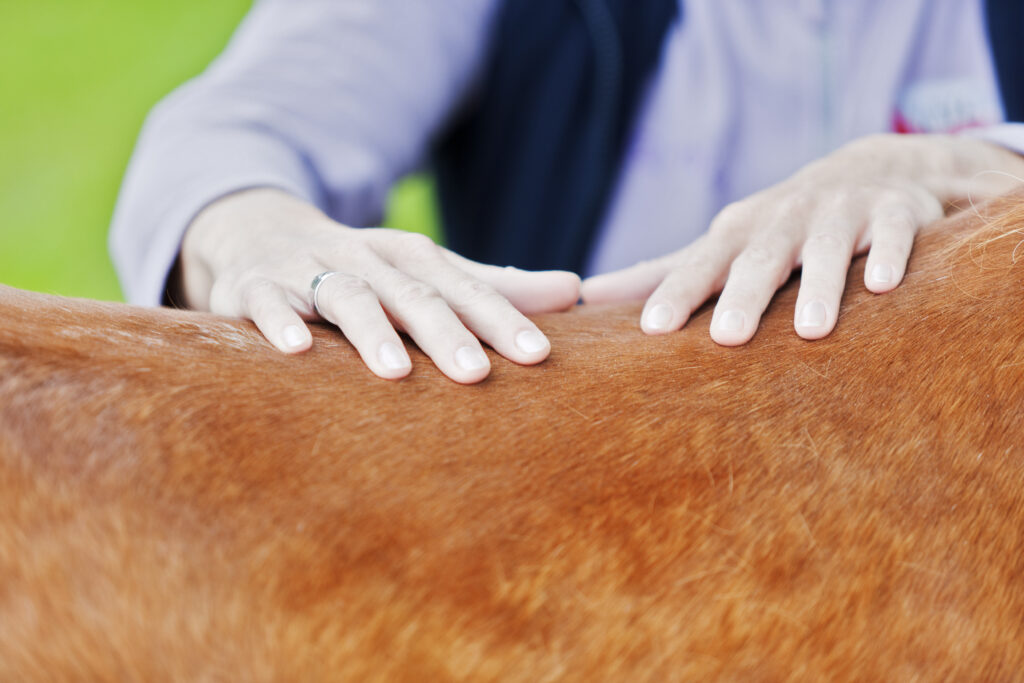
- Health status – Is your horse up to date on their deworming program and dental work? Do they have digestive upsets or special needs?
- Breed/genetics/disposition – is your horse a hot-head who stresses out easily or a steady eddie who doesn’t bat an eye?
- Environment – Does your horse have adequate forage and what is their exercise level? Are herd dynamics or time of year affecting their condition?
Once individual and external factors have been considered and cleared and you have given your horse a body condition score, now what? Here are nutrition changes to consider.
BSC 1-3.
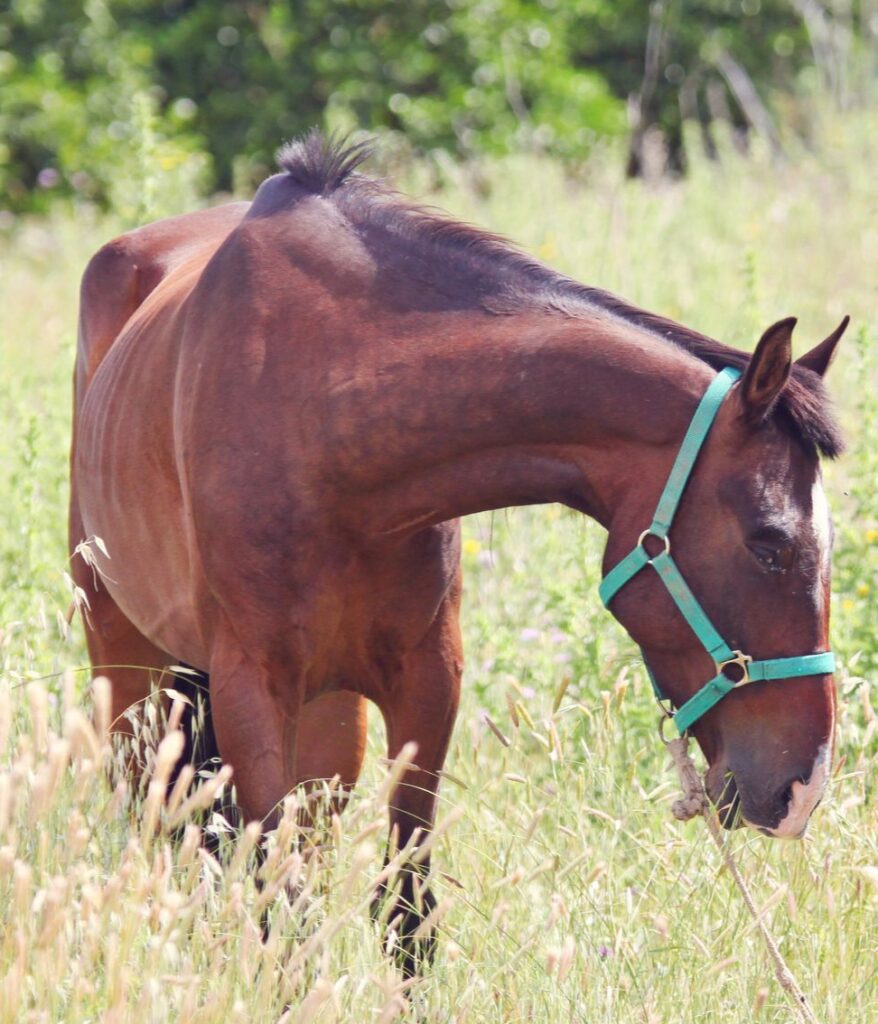
Horses with a body condition score are under conditioned. On the Henneke scale, these are classified as poor (1), very thin (2), and thin (3). No or very little fat covers the six key areas upon visual inspection and when palpating with your hands. Regardless of how they reached the low BCS, the underweight horse is ingesting fewer calories than they are expending in energy. When losing weight, they have begun using fat stores for metabolic processes and biological functioning, which is also why muscle wasting can generally be seen with weight loss. Veterinary advice is a must for these horses to rule out underlying health problems.
In order to gain weight on a thin horse, we need to increase the fat and fibre in the diet so they are ingesting more calories. This process has to occur very slowly on an emaciated horse, even though horse lovers wish to see condition rebound as soon as possible. The first step is to make sure the horse always has access to fresh, clean water and to introduce quality hay with a high nutritional content and, in turn, calories. As hindgut fermenters, horses not only require long stem forage to keep their digestive systems happy, but also to provide a great source of calories.
The second step in the weight gain process is to introduce a fat concentrated meal or top dress in multiple small meals per day. Fat has many more calories than forage does, so high-fat concentrates fed over multiple meals is an ideal addition to the underweight horse as many products not only contain the fat needed for weight gain, but have added pre and probiotics to promote healthy digestion and nutrient absorption of the new diet.
Look to a feed that has an 8-11% crude fat content on the label. When introducing new feeds to the underweight horse, make slow changes so your horse can adapt and their sensitive tracts are not overwhelmed.
BSC 4-6.
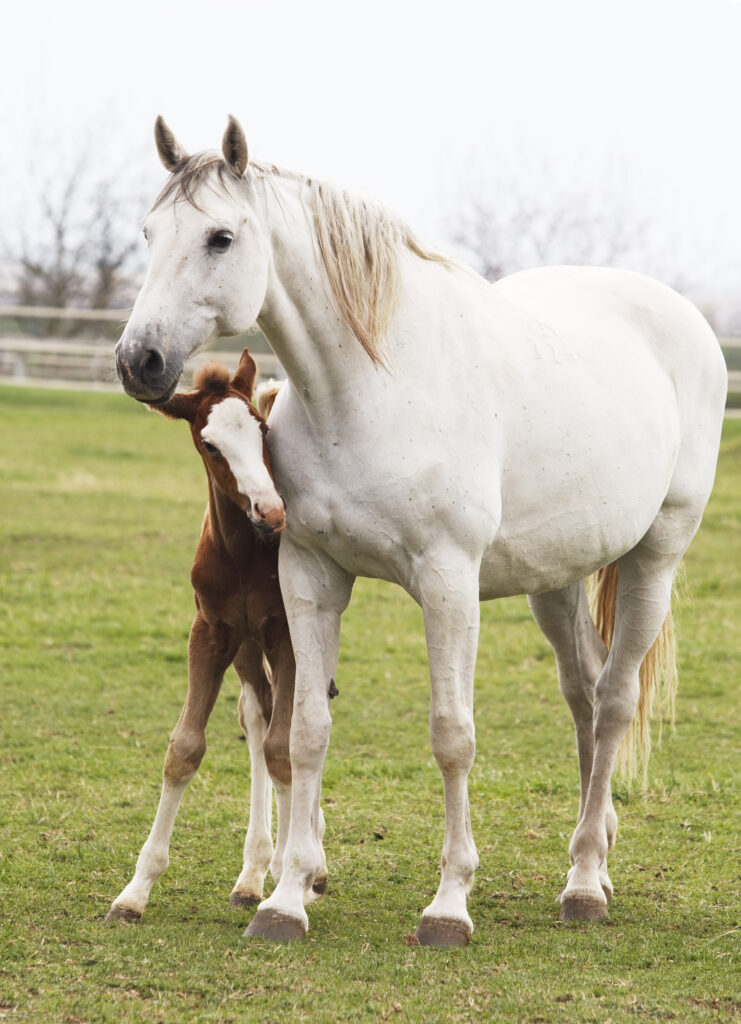
Typically, a BCS of 4-6 is ideal for most breeds, depending on their requirements. For example, an active thoroughbred in race training will often fall on the 4-5 range (moderately thin to moderate) and be in ideal competition form, while a thoroughbred in the hunter ring sometimes teeters closer to 6 (moderately fleshy) to appeal to judges. Mares entering parturition and lactation may also score a 6 as their nutrient requirements are about to be that of a racehorse once the new foal arrives.
These horses would be kept on a maintenance diet as they fall within the ideal range of the Henneke BCS. A fully fortified, moderate fat and fibre feed (5-6% crude fat) often continues to do well, and if fed below label requirements, is topped up with a vitamin and mineral ration balancer.
It is important to keep assessing the horse in ideal condition, particularly with hands-on evaluation, to be sure they do not continue to gain extra condition, putting them in the next category of horses.
BCS 7-9.
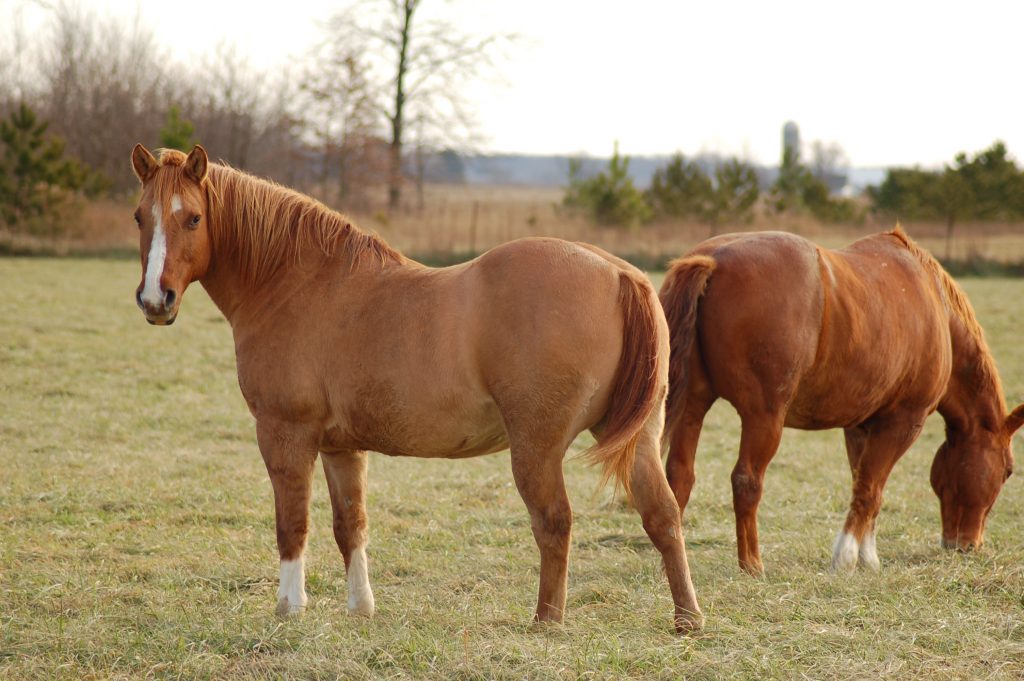
“More to love” sounds nice, and it’s easy to think we are going the right thing having a horse that is overweight compared to underweight, but prolonged extra weight on your horse can be even more detrimental in the long term, putting extra weight on their joints and putting them at risk for metabolic issues. On the Henneke scale, these horses are considered fleshy (7), fat (8), and extremely fat (9). Fat deposits itself along the back and in between the ribs, and a noticeable bulge can be seen and felt on the tailhead of those who are way in excess.
Along with increased exercise, horses in the 7-9 range of BCS need to limit the calories coming in, the opposite of those scored 1-3. The overweight horse is consuming more calories than their body can burn, whether that be in forage or feed or both. Look to a more mature hay of lesser quality to still satisfy their need for forage but reduce the calorie intake and offer at 1% of their body weight rather than free choice. Putting them on a dry lot or using a grazing muzzle will help control the calories taken in from lush pasture.
Instead of a feed with added fat, look to a mineral or a ration balancer that has no added calories but provides the daily vitamins and minerals they need to stay healthy – particularly with the reduction in lush pastures or high quality hay. If you feel guilty about taking away your horses’ much loved grain, don’t fret – many ration balancers come in a palatable pellet form so they still get a tasty “meal” but a healthier option for their current BCS!
Many things are out of our control when it comes to weight gain and loss in our horses, but with good management and small changes in nutrition, any horse can get back to proper shape in no time. Continually assessing your horses’ body condition using the objective measures of visual and tactile parameters on the Henneke BCS scale can help keep your horse in ideal body weight for long term health.
To learn more about Body Condition Scoring, try out Equine Guelph’s Interactive BCS Tool and sign up for a Short Course to take a deeper dive into the topic!
To schedule an on-farm call or hay analysis from one of our reps, visit our website, contact us, or email us directly at: happyhorses@masterfeeds.com
Product Spotlight
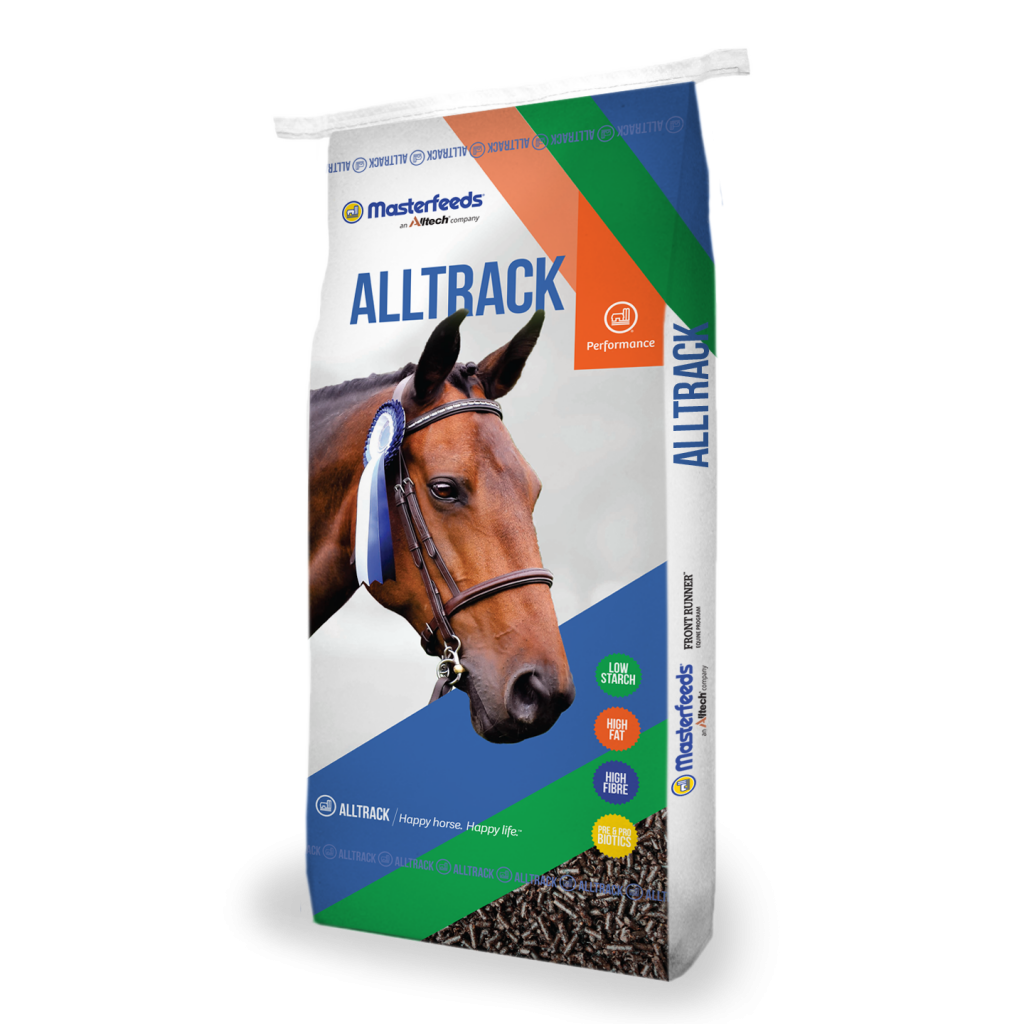
ALLTRACK (TEXTURED) EAST | WEST
FOR ALL TYPES OF EQUINE ATHLETES
Alltrack is a great choice for owners and trainers looking for a very low starch texturized feed for high performance athletes. A blend of high quality fibres, beet pulp and soft pellets fortified with protein, vitamins and minerals and blended with oil and molasses makes a palatable complete and balanced feed promoting good digestive health for all tracks.
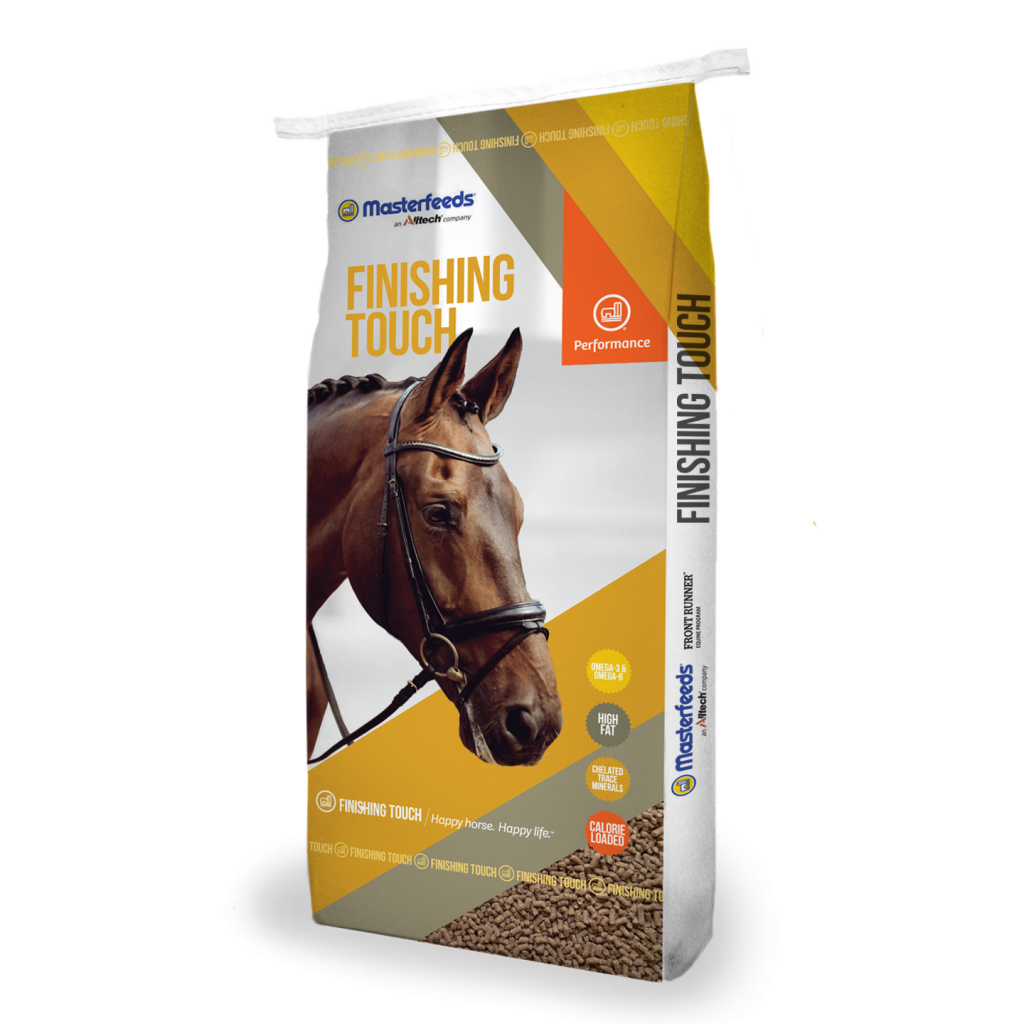
FINISHING TOUCH (CRUMB) EAST | WEST
FOR IMPROVED PERFORMANCE, WEIGHT GAIN & COAT CONDITION
Finishing Touch is a smart energy addition to any diet. This high fat supplement is designed to be topdressed on a balanced complete feed to increase the caloric density of the diet and add fat calories as an energy source. A very palatable formula, beneficial to any horse for improved performance, weight gain and coat condition.
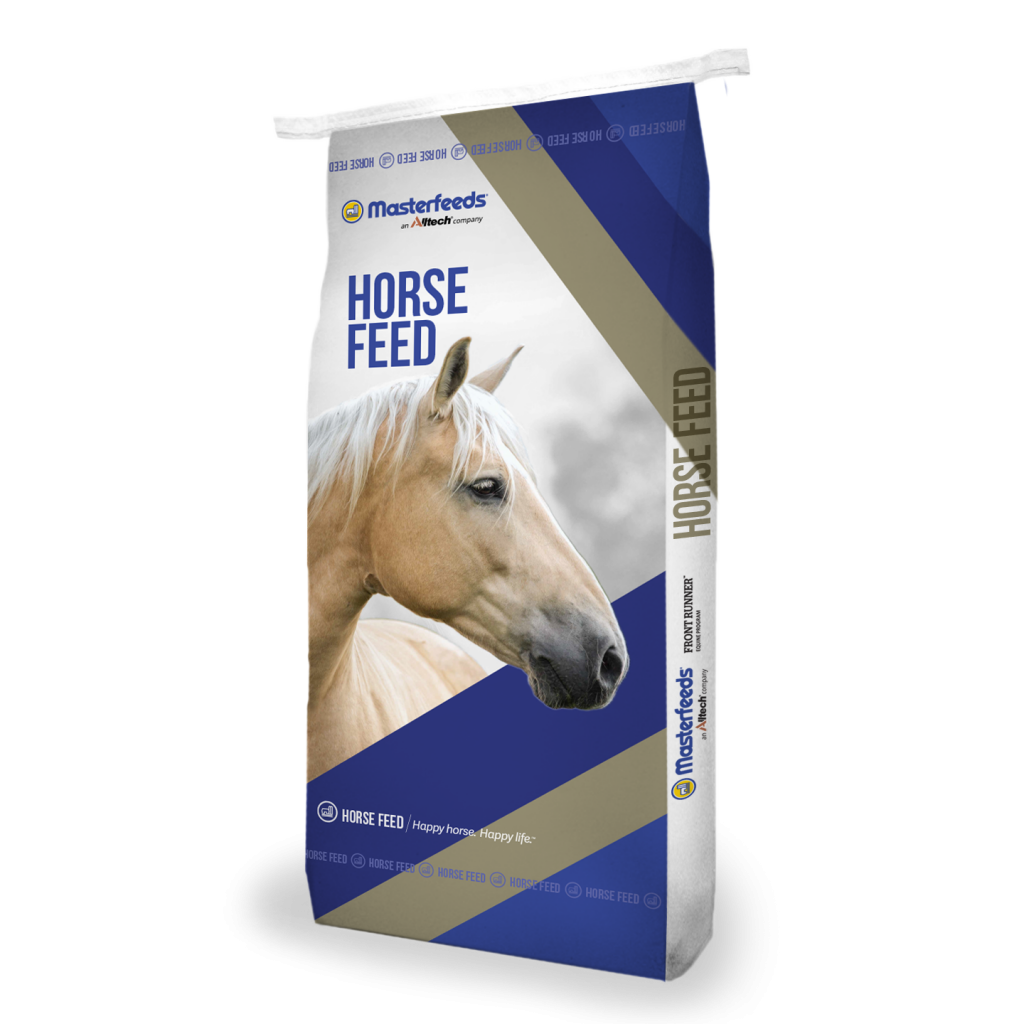
FAT ‘N’ FIBRE (PELLET) EAST | WEST
FOR MAINTENANCE AND LIGHT PERFORMANCE
Masterfeeds Fat ‘n’ Fibre is a complete and balanced 12% protein, higher fibre added fat ration. Fat ‘n’ Fibre is a controlled starch feed at a budget friendly price point for those looking for a good, basic fat and fibre ration.
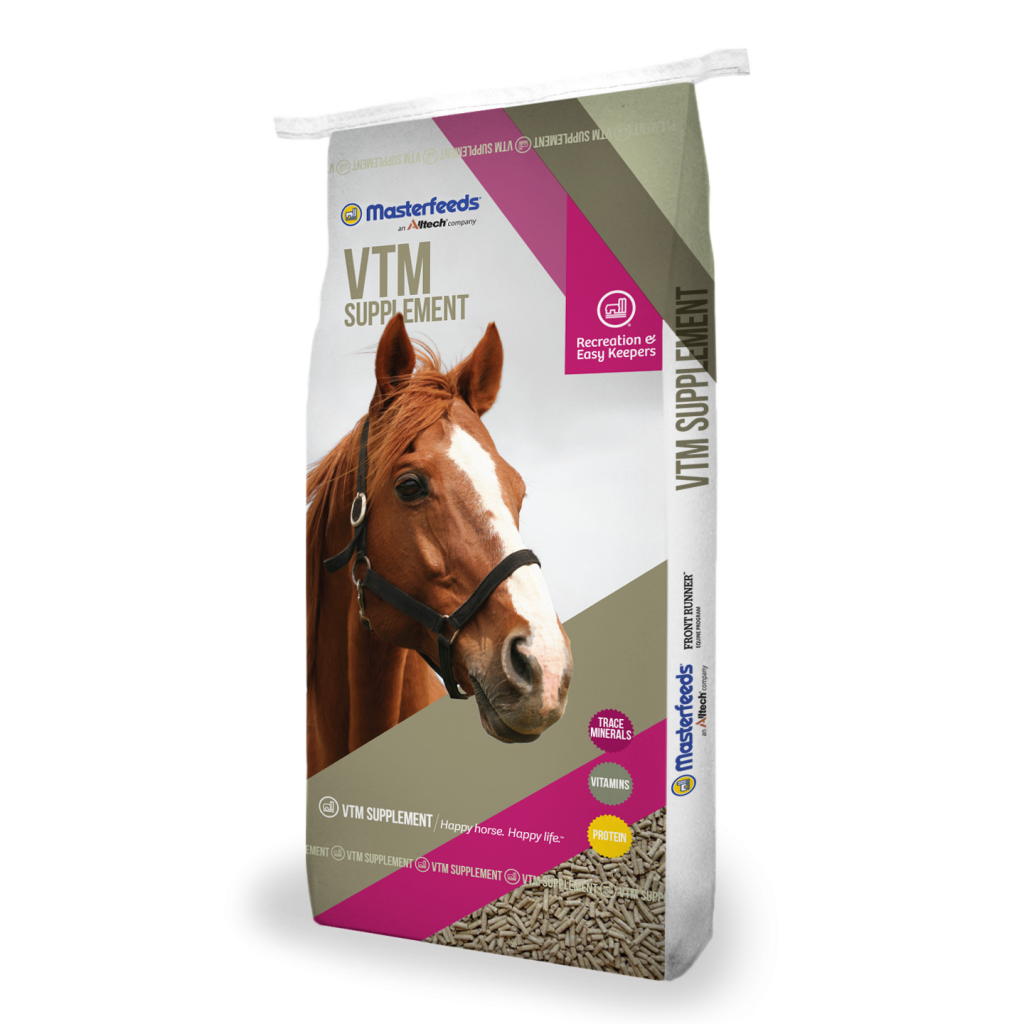
VTM SUPPLEMENT (PELLET) EAST | WEST
FOR ALL CLASSES OF HORSES WHEN EXTRA NUTRIENTS ARE REQUIRED
VTM is a trace mineral and vitamin supplement with elevated protein. It can be mixed with grains to make your own ration or topdressed on complete feeds to add additional minerals, vitamins and protein. Very palatable and versatile, it’s a great choice for all classes of horses when extra nutrients are required.
Related Posts
- Two Ends of the Spectrum: Feeding the Under or Over Weight Horse
- Preventing and Treating Colic
- Gastric Ulcers and Tying Up
- Guide to Deworming Your Horse
- Tips to Minimize Parasites on the Farm
- Hay Shortages and Quality Issues: Finding Fibre Alternatives and Balancing Rations
- Considering Calories: Weight Loss Causes and Solutions
